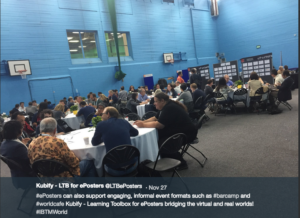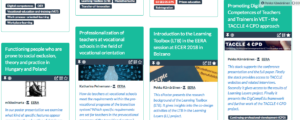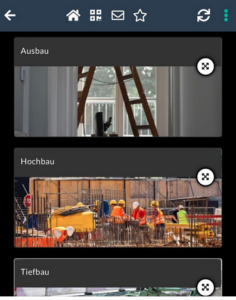Reflections on the impact of the Learning Layers project – Part Four: What all has contributed to the sustainability of the Learning Toolbox?
With my three previous posts I have started a series of blogs that report on the discussions of former partners of the Learning Layers (LL) project on the impact of our work. The discussion started, when I published a blog post on the use of Learning Toolbox (LTB) in the training centre Bau-ABC to support independent learning while the centre is closed. This triggered a discussion, how the digital toolset Learning Toolbox – a key result from our EU-funded R&D project – is being used in other contexts. This then gave rise to collect such experiences and to start a joint reflection on the impact of our work.
In the first post I gave an overview of this process. In the second post I presented the main points that I and my co-author Gilbert Peffer outlined on the use of LTB to support vocational and workplace-based learning in the construction sector. In the third post I gave insights into the use of LTB in other contexts based on spin-off innovations and on refocusing the use of the toolset. With this concluding post I try to summarise – from my perspective – what factors have contributed to the sustainability of the Learning Toolbox. Here I will make use of some aspects that were outlined for the authors of particular case studies that were brought together in our joint discussion. The points that I present below reflect the views of me and my co-author Gilbert Peffer on our experiences with the construction pilot of the LL project and its follow-up phase.
Strong focus on co-design and stakeholder engagement
As we see it, the co-design, pilot implementation and wider deployment of LTB in the training centre Bau-ABC Rostrup underlines the importance of well-functioning research & development dialogue. Many elements in the project design of Learning Layers provided favourable starting points – e.g. the emphasis on co-design practices, iterative processes and flexible teamwork. Yet, during the work, the partners had to find their ways – time and again – to adjust the guiding principles, the practical pedagogic orientations and possible software solutions to each other.
Flexible collaboration between partners during the follow-up phases of the project
By the end of the project it was not certain, in what ways the innovations could be sustained and the collaboration between researchers, technical partners and practitioners could be continued. From this perspective it was essential that the developers of the LTB and the accompanying researchers from research institute ITB took several initiatives to launch follow-up activities with partner organisations in the construction sector. These efforts were not always successful in terms of acquisition of new funded projects. Yet, they provided new insights into potential use of the LTB in organisational contexts and between dispersed work processes.
Rethinking the contextual opportunities and applying technology in previously unforeseen contexts
Due to many intervening factors the progress with the follow-up activities had not been a direct process of scaling up the innovation. Instead, the interested partners have had to find new paths for working further with the Learning Toolbox in new contexts. Partly the success in using Learning Toolbox in vocational training and partly the spread of using ePosters in conferences have inspired new users. Partly the feasibility studies in the construction sector have opened new prospects for using Learning Toolbox for organisational knowledge sharing – as has been the case latterly in the healthcare sector.
Shaping of R&D projects as innovation hubs/ platforms
On this point our experiences suggest a common success conclusion: R&D projects should not be understood and planned out as mere research studies. Neither should they be looking for allegedly integrated solutions (‘one size fits all’, ‘one format suits all’). Instead, they should rather be shaped as networked innovation hubs or platforms. In such context research elements can receive initial validation and a team to start an innovation process. As we see it, the strength in the construction pilot of the LL project was the continuity of a participative research & development dialogue that kept the processes vivid and helped to overcome difficult periods. Moreover, the multiple support activities helped the practitioners to take ownership of the innovation and become multipliers of new practices.
—
I guess this is enough of our reflections for the moment. I will get back when we know, on what forum and in what way we will be presenting our joint findings and conclusions from all case studies.
More blogs to come …










